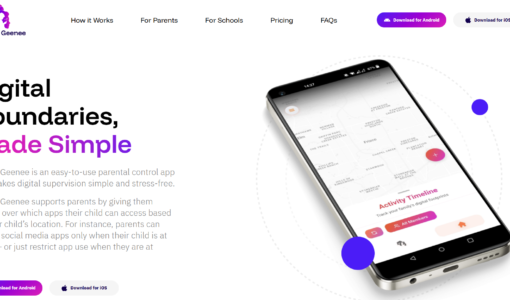Once upon a time, our childhood was characterized by scraped knees, engaging games of hide-and-seek, and the comforting tradition of bedtime stories. In contrast, contemporary childhood is defined by swipes, likes, and continuous scrolling. Welcome to the phenomenon known as ‘The Lone Generation’—children who are growing up in a digital landscape where screens serve as their primary playground and the internet is simultaneously their most reliable companion and significant adversary.
While technology has facilitated unprecedented opportunities for learning and connectivity, it has also presented a range of complexities and challenges. The critical inquiry remains: how can we protect the digital innocence of children while simultaneously allowing them to fully embrace the potential of the digital realm?
The Digital Tightrope: Balancing the Positive and the Negative
Curiosity, often regarded as the essence of childhood, incurs significant risks in the digital age. A straightforward online search can expose young minds to inappropriate content, misinformation, and unsettling realities that exceed their developmental comprehension. What once constituted a gradual exploration of knowledge has been transformed into a torrent of unfiltered stimuli.
Within the illuminated confines of screens, various dangers are present. Cyberbullying, online predation, and data breaches are not mere headlines; they represent real and pressing threats. Although the internet offers remarkable learning opportunities, it can also be harsh and unforgiving. Screens have been designed to attract and captivate users, often targeting children who possess an innate curiosity. Prolonged exposure to digital devices can adversely affect children’s mental health, disrupt their sleep cycles, and hinder their ability to engage in face-to-face communication.
The Guardians of Digital Innocence
While it may be appealing to provide a child with a tablet to achieve a moment of peace, effective digital parenting necessitates active involvement and engagement. Parents have the authority to cultivate responsible digital habits through strategies such as establishing screen time restrictions, utilizing parental controls, and, importantly, modeling appropriate behavior. Additionally, educational institutions must adapt to this new reality by embedding digital literacy within their curricula, equipping students with essential skills to safely navigate the online world. Promoting outdoor activities, nurturing creativity, and fostering critical thinking are vital components of this educational approach. Fortunately, there is now a variety of secure applications available that can mitigate access to harmful content and create healthy social boundaries for children.
Raising Digital Warriors, Not Just Users
In the present context, it is essential to educate children on the importance of pausing, analysing, and questioning the credibility of online information; this is a crucial skill. Critical thinking acts as an essential defence mechanism in an environment rife with misinformation. Parents should endeavour to transcend superficial inquiries, such as “How was your day?” and instead engage in more profound discussions about their children’s online experiences, the content they consume, and the individuals with whom they interact. This ongoing dialogue fosters a climate of trust and offers valuable guidance.
It is imperative to understand that technology is not the adversary; rather, it is the unregulated and unmonitored use of technology that presents significant risks. By encouraging children to seek enjoyment beyond screens—through literature, outdoor exploration, musical pursuits, and meaningful interpersonal connections—we can promote a holistic and balanced lifestyle.
The Road Ahead
There is no possibility of reversing the advancements of the digital age; it is an integral aspect of our society. However, this reality does not imply that we must allow it to dictate the contours of childhood without appropriate safeguards. The Lone Generation need not navigate this journey in isolation. Through collaborative efforts involving parents, educators, and community members, we can cultivate an environment where children can leverage the advantages of technology while concurrently preserving their innocence.
The future is not solely digital; it is inherently human. It is crucial that we work collectively to ensure that our children thrive in both spheres.




